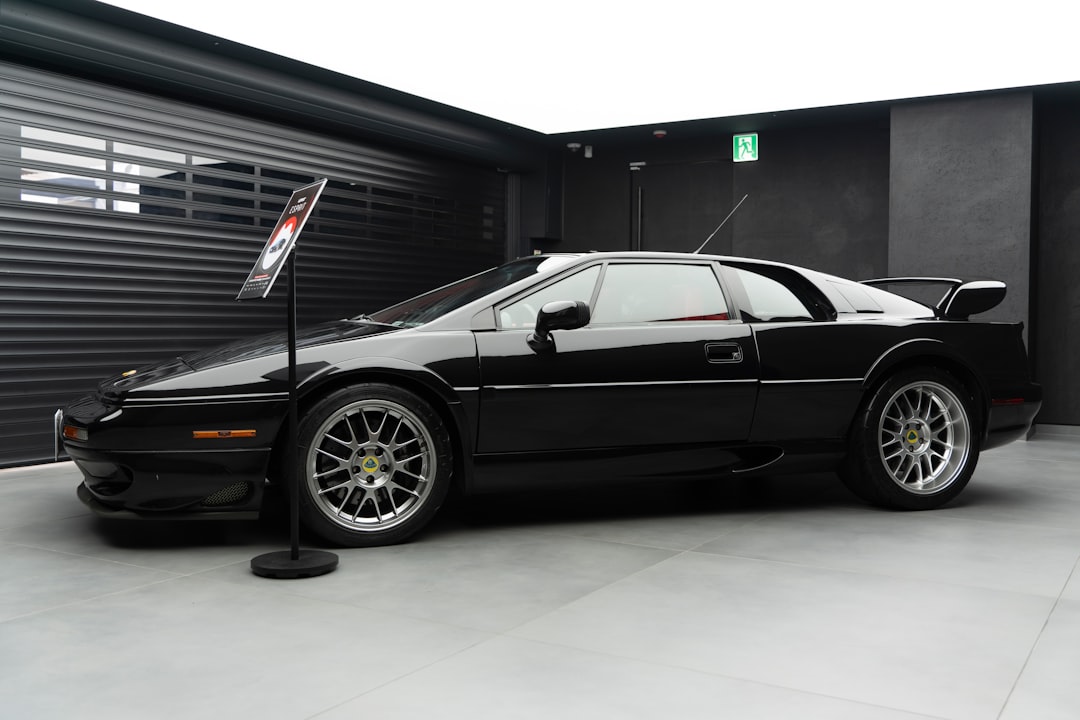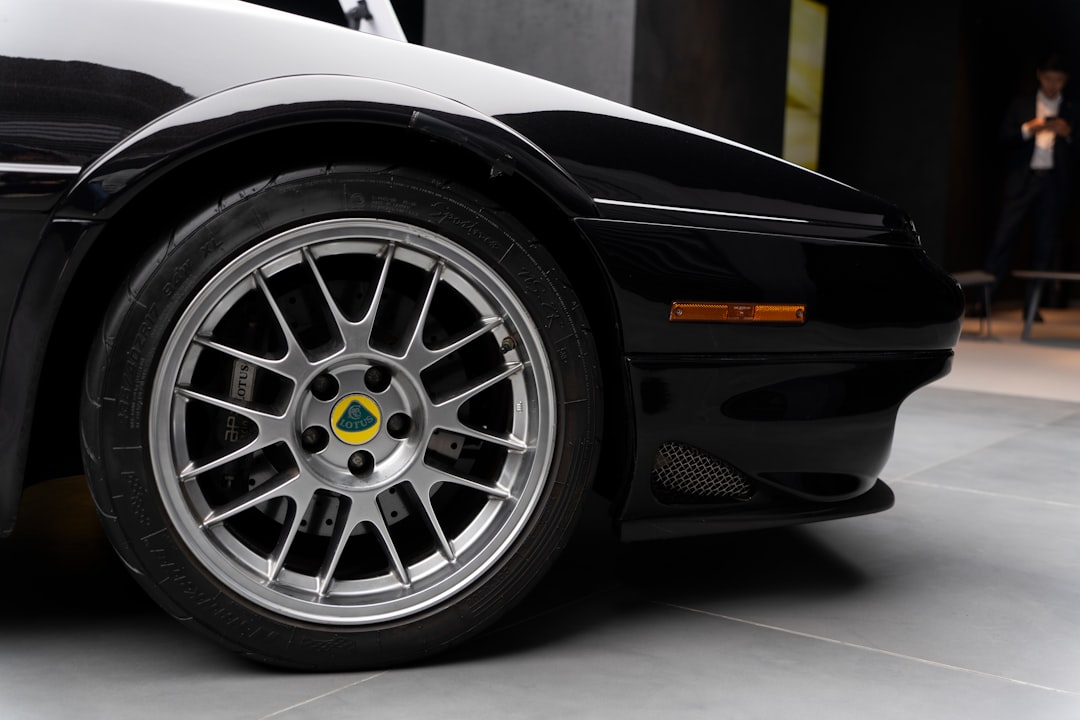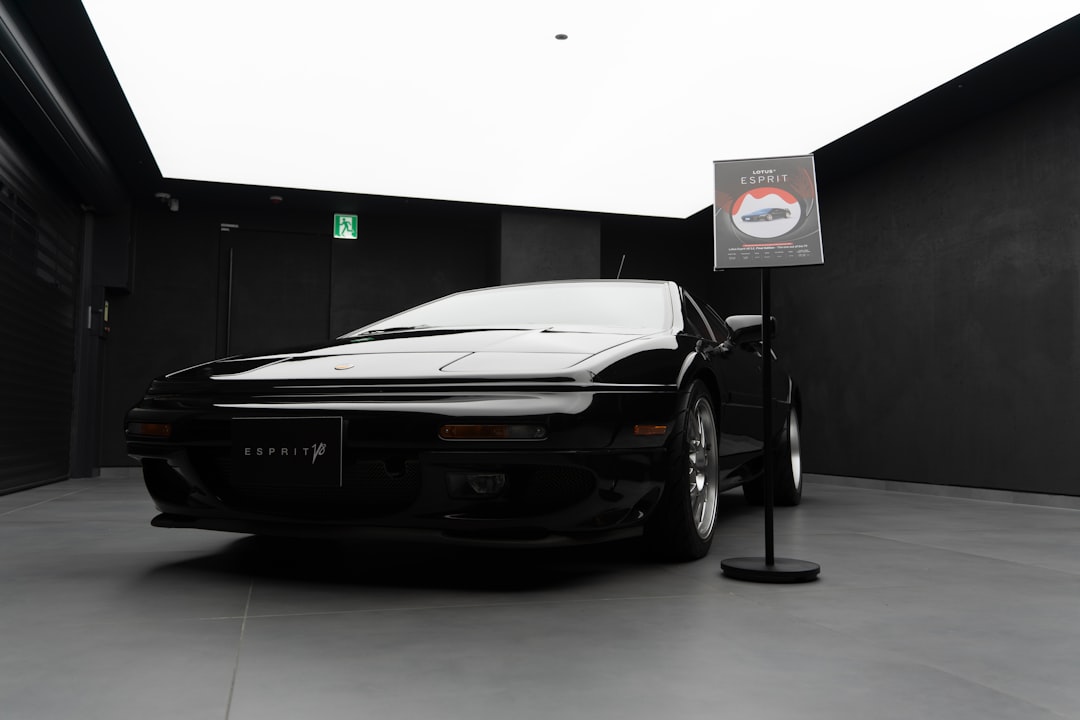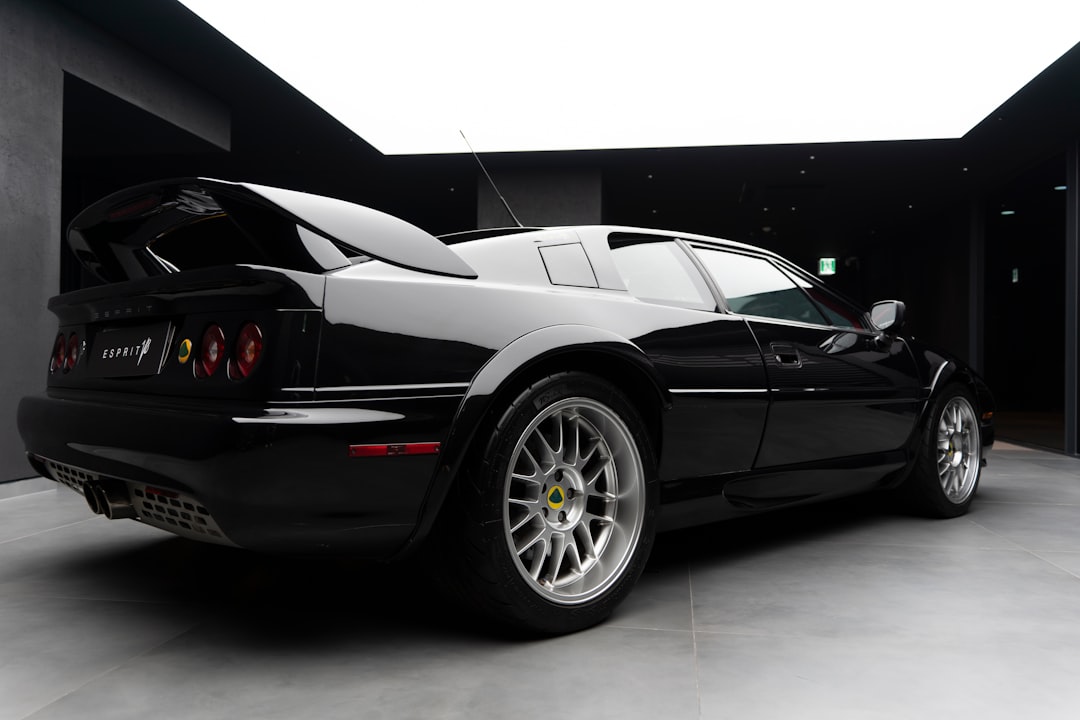

Engage prospects with a scan and streamline customer engagement with FREE QR code marketing tools by Sona – no strings attached!
Create a Free QR CodeFree consultation

No commitment

Engage prospects with a scan and streamline customer engagement with FREE QR code marketing tools by Sona – no strings attached!
Create a Free QR CodeFree consultation

No commitment
Classic car dealerships have long served as the heartbeat of automotive nostalgia and investment, connecting enthusiasts with vintage car dealerships, antique car sales, and collector car dealerships that help preserve automotive history. As the demand for pre-owned classic cars and restoration services grows, customers seek verification of authenticity, transparent valuations, and seamless transactions. The industry now faces challenges bridging high-touch, offline experiences with modern digital engagement. Today’s classic car buyers expect instant access to car histories, maintenance records, and insurance options without compromising the trust and personal connection that defines the market.
Amid heightened expectations, longstanding limitations like manual lead capture forms, printed sales brochures, and static showroom displays hold dealerships back. High-value prospects may visit an event, browse a showroom, or scan display cards but never make it onto follow-up lists, leaving revenue on the table. Missing out on these engaged buyers because their data is not captured or synced with your CRM can translate into lost opportunities and increased competition, especially as alternative dealerships adopt more agile digital strategies.
QR codes offer a way forward, enabling instant and frictionless access to digital experiences wherever a prospect interacts, whether at a festival, auction, test drive lot, or the dealership floor. With strong audience tracking and modern CRM enrichment, QR touchpoints help dealerships identify, segment, and nurture classic car buyers at every step. This guide explains how QR codes can be strategically deployed not only to attract, identify, and engage customers, but also to support inventory management, verify authenticity, and connect offline interactions with powerful digital workflows, allowing forward-thinking dealerships to close more sales in a collector-driven market. Platforms like Sona QR make it easy to operationalize these programs at scale.

Classic car dealerships often struggle to capture the full value of showroom or event foot traffic. Anonymous visitors who show strong interest can slip through the cracks when paper forms are ignored or brochures disappear with no trace. This traditional bottleneck leads to missed engagement and makes it difficult to reach buyers with real intent, giving competitors the first opportunity to follow up.
Modern solutions make it possible to bridge this gap by embedding QR codes across high-traffic touchpoints and routing every scan into a measurable digital journey. By linking physical interest to instant actions like valuation requests, virtual test drive scheduling, or restoration inquiries, you accelerate time to conversation and build a pipeline of qualified leads. Platforms like Sona QR make this process simple to manage across campaigns, locations, and media types, while automatically syncing activity to your CRM and ad platforms.
With a robust QR management approach, every scan surfaces timely engagement signals, triggers CRM enrichment, and automates nurture workflows. The result is a lead engine that keeps pace with discerning buyers while preserving the personal, high-touch experience collectors love. Start creating QR codes for free.

Classic car dealerships face the challenge of connecting offline interest to online action and turning anonymous enthusiasts into qualified leads. When staff rely on manual interaction and static brochures, valuable traffic remains unknown, follow-up is delayed or never occurs, and genuine leads slip away. QR codes remove that friction and make every physical interaction count.
By integrating QR codes into your showroom, events, and direct mail, you translate intent into instant digital engagement. Buyers can explore provenance reports, watch restoration videos, and raise their hand for a valuation in seconds. For teams, that means faster lead routing, clearer prioritization, and better attribution across channels.
Appointment cards, showroom spec sheets, auction paddles, and window stickers become data-rich touchpoints once you add a QR code. The buyer gets instant value and your team gains the context needed to follow up with precision.

Classic car dealerships need flexible QR tools that fit many interactions, from appraisal requests to VIP event registrations. A one-size-fits-all link can limit segmentation and reduce campaign performance. Matching the format to the action keeps scanners engaged and helps you capture cleaner data.
The most effective formats for this vertical typically include web links for inventory and valuations, SMS or email prefills for instant replies to a salesperson, vCards to save specialist contacts, Wi-Fi for showroom browsing, and app downloads for loyalty or inventory tracking. Dynamic QR codes are recommended for most public placements so you can edit destinations, add UTM parameters, and track performance.
Dynamic QR codes keep offers and tracking current and actionable, unlike static materials that quickly go out of date. With Sona QR, you can create, manage, and update all formats in one dashboard and connect scan data to tools like HubSpot, Salesforce, and Meta Ads.
Many classic car dealerships miss growth by treating all foot traffic the same and failing to tag interest by model, era, or service need. Without segmentation, your follow-up will be generic and less persuasive. QR codes turn existing traffic into a set of distinct, high-value audience segments that your team can nurture more effectively.
Start by auditing your physical touchpoints and asking where a scan could turn curiosity into action. Prioritize placements where you lose leads today, such as at events or after-hours browsing, and make each one a scannable moment with a clear call to action and benefit.
These placements reveal engagement signals that inform personalized outreach and unlock more transactions from traffic you already attract.
The longer it takes to capture a collector’s details, the colder the lead becomes. QR codes create a low-friction path to express interest at the moment it is highest, such as while admiring a vehicle or comparing restoration options. That immediacy is crucial when buyers are researching multiple dealerships or evaluating a purchase with significant emotional and financial weight.
By placing QR codes where intent peaks, you can guide scanners to next-step actions that move the sale forward. Pair every code with a clear promise of value, such as instant provenance details, early access to a new arrival, or a free appraisal slot, to maximize conversions. For creative deployment ideas, explore how to integrate QR codes into campaigns.
Each use case can be made dynamic so content stays fresh and analytics remain accurate. With Sona QR, you can A/B test offers, track scan-to-lead conversion, and trigger workflows that match the action a scanner took.
Each QR code scan is a signal that reveals intent, context, and behavior. When you deploy multiple codes across touchpoints, you automatically segment your audience and gain the data needed to fuel precise retargeting and follow-up. In classic car sales, distinctions like track-day enthusiasts versus concours collectors, or restoration seekers versus quick-flip investors, guide very different offers and timelines.
Treat QR codes as entry points into tailored journeys. Align each scan with a funnel stage so your CRM, ads, and sales outreach adapt to what the buyer wants next. This keeps communications relevant and increases your chances of converting high-value prospects. For campaign execution, see Sona’s retargeting playbook.
Audience distinctions specific to this vertical include club members versus first-time visitors, restoration clients versus retail buyers, and era-specific enthusiasts, such as 60s American muscle versus 80s European classics. Build your segments around these interests and your follow-up will feel personal, not promotional.
Classic car dealerships operate in many channels: print ads, events, window displays, direct mail, and social content. The challenge is that each channel often collects little to no data, leaving teams with incomplete visibility. QR codes unify these channels by creating a shared method of capture, measurement, and activation, so you can see what is working and scale it. To understand how to measure influence across touchpoints, tie scans to downstream outcomes in your analytics.
A connected funnel in this industry typically looks like this: a prospect scans a window sticker after hours, views a landing page with provenance and financing options, requests a valuation through a form, then receives an automated email sequence and a call from a specialist. Sona QR manages the codes, attributes the engagement, and syncs it to your CRM, so sales and marketing act on the same signals.
QR codes serve as the offline onramp to your digital marketing engine. With a centralized platform like Sona QR, you can manage codes, monitor performance, and sync scan data with your CRM and ad platforms to create a truly integrated strategy.
Launching a QR program does not need to be complex. The key is to align each code with a clear business outcome, choose the right format, and measure results in one place. The steps below will help you build a repeatable process that fits classic car sales cycles and event calendars.
Use this checklist to guide your rollout across showrooms, events, mailers, and out-of-home placements. Train your team on how each QR interaction flows into the CRM and what to do next, so no qualified lead waits for a reply.
Clarify what challenge you are solving. For example, you might aim to reduce missed leads at auctions by capturing attendee details in real time or to boost collector club sign-ups from showroom visits by offering an exclusive restoration tour.
Prioritize placements where lead loss is highest. Common high-impact contexts include after-hours window shopping, high-traffic event booths, and price display cards on premium inventory. Select one to three use cases for your first campaign to keep execution focused.
Choose the code format that matches your action. Static codes can work for fixed, non-tracked assets, such as a temporary showroom poster. Dynamic codes are ideal for public placements because they allow editing, tracking, and segmentation without reprinting.
If you want performance data, retargeting, or future flexibility, dynamic is the default. With Sona QR, you can manage both static and dynamic codes and convert static to dynamic later if needed.
Adopt clear, brand-consistent visuals. Include your logo, a branded frame, and a compelling call to action such as “Scan for VIN history” or “Scan to book a free appraisal.” Keep adequate quiet space around the code and ensure contrast is high.
Test scannability under real conditions. Check multiple devices, distances, glare in windows, and outdoor lighting. Validate that the destination loads fast and is mobile optimized. A slow page is a lost opportunity.
Roll out codes where they can create immediate lift. Start with a mix such as windshield stickers for premium vehicles, entrance signage for club sign-ups, and direct mailers for VIP preview invites. Ensure staff know how to reference and promote the codes during conversations.
Map each placement to a unique tracking ID in Sona QR so analytics are clean. Coordinate timing with campaigns, such as launching an auction-focused flow the week before a local sale.
Review performance by channel, placement, and audience weekly. A/B test offers, landing page headlines, and calls to action. Expand winners and retire underperformers. Use behavioral insights to refine segmentation and retargeting.
Close the loop by connecting scans to pipeline and revenue. With Sona QR and Sona.com, you can attribute influence across touchpoints and quantify the value of each code, from first scan to closed deal. Learn more about offline attribution.

Classic car dealerships frequently lack visibility into which offline assets and interactions drive revenue. Without strong revenue attribution, it is hard to know whether auction sponsorships, event banners, or direct mail pieces are worth the spend. A modern QR stack transforms these unknowns into measurable activities that sales and marketing can act on.
Tracking starts at the scan, but it should not end there. The key is to capture context such as location and media, push data into your CRM, and tie scan activity to sales outcomes. That way, your team understands which placements sourced qualified opportunities and which messages moved buyers closer to a purchase.
With Sona QR and Sona, you can go beyond engagement metrics. Sona QR logs every scan, measures engagement by channel and context, and syncs activity with HubSpot or Salesforce. Sona, an AI-powered marketing platform, applies identity resolution and multi-touch attribution to connect anonymous scans to known buyers, unify fragmented touchpoints, and attribute revenue to QR interactions. The outcome is clarity on which offline moments drive pipeline and which deserve more investment.
To maximize lead capture, QR codes must solve specific pain points, not just exist on every surface. Focus on placements that convert curiosity into action and on automation that makes follow-up immediate. Staff training also matters because a quick, value-focused explanation often doubles scan rates.
Select the best practices that align with your media mix and sales process. Then test and iterate. Over time, you will build a library of code templates and workflows that your team can deploy in minutes for any event, campaign, or inventory arrival.
Creative deployment ideas for this vertical include printing a QR code on maintenance invoices that links to a trade-in valuation or featuring QR codes on club membership cards that unlock private collection tours. Both deepen engagement and surface new revenue opportunities.

Dealerships nationwide are removing friction and capturing more qualified leads by placing QR codes at decisive moments. The most effective programs prioritize provenance, valuation, and convenience, which align with the motivations of serious collectors and investors.
Borrow inspiration from these scenarios and adapt them to your market. The common thread is simple: match the QR promise to the buyer’s intent at that exact moment, then automate the steps that follow.
In each example, QR codes capture buyer intent, enrich CRM profiles, and power personalization beyond what traditional methods can do. With Sona QR, dealers can manage these campaigns centrally, compare performance across locations, and scale the winners.
Success with QR codes depends on thoughtful placement, clear value propositions, and dependable execution. Many campaigns underperform because codes are too small, CTAs are vague, or landing pages are not mobile friendly. Avoid those pitfalls and design for the real-world conditions where scanning happens.
Relevance over volume is the rule. A few high-impact placements with strong offers will outperform a scattershot approach. Keep content fresh and use dynamic codes so your materials never go stale between print runs or events.
As the classic car dealership landscape evolves, QR codes enable businesses to deliver the seamless, data-driven experiences today’s collectors expect. By solving key bottlenecks like missing high-value prospects, limited visibility into engagement, and lost upsell opportunities, a well-integrated QR strategy links every offline point of contact with measurable digital outcomes. With platforms like Sona QR and Sona, every interaction is tracked, every interest is captured, and every buyer journey is improved, positioning your dealership to thrive at the intersection of tradition and digital innovation.
QR codes have revolutionized classic car dealerships by transforming traditional marketing into dynamic, measurable lead-generation engines. Whether it’s attracting passionate collectors, enhancing showroom experiences, or capturing detailed customer insights, QR codes turn every brochure, display, and vehicle sticker into a powerful tool for driving qualified leads and accelerating sales. Imagine instantly knowing which classic car listings or promotional materials spark the most interest—and acting on that data in real time.
With Sona QR, creating dynamic, trackable QR codes is effortless. Update campaigns on the fly without costly reprints, connect each scan directly to your sales funnel, and gain valuable analytics that link customer engagement to revenue. No missed opportunities, just smarter lead capture and higher conversion rates for your dealership. Start for free with Sona QR today and turn every scan into a conversation, a lead, or a closed deal.
The article does not list specific dealerships but suggests looking for ones that offer authentic vintage and collector cars with services like restoration and transparent valuations.
Authenticity can be verified through third-party provenance reports accessible via QR codes placed on auction paddles or vehicle displays that link to detailed history and appraisal information.
The article references popular segments such as 60s American muscle cars and 80s European classics but does not specify particular models.
Classic car dealerships offer vehicle sales, restoration services, valuations, provenance verification, financing pre-qualification, insurance options, and collector club memberships.
The article recommends accessing restoration galleries and maintenance records often provided by dealerships via QR codes to help preserve classic cars.
They use QR codes at events, showrooms, and print materials to capture interest instantly, routing scan data into CRM systems to qualify and nurture leads efficiently.
QR codes eliminate offline-to-online friction, provide instant access to vehicle history and services, enable dynamic content updates, streamline lead tracking, and reduce marketing costs.
Dynamic web links, vCards, SMS or email prefills, Wi-Fi access codes, and app download links are most effective to engage customers and track interactions.
QR codes should be placed on windshield stickers, pricing sheets, auction paddles, event badges, direct mailers, window displays, and point-of-sale materials.
By integrating QR codes across multiple channels, dealerships can track engagement, segment audiences, automate follow-ups, personalize offers, and attribute revenue to offline campaigns.
Avoid small or hard-to-scan codes, vague calls to action, non-mobile-friendly landing pages, cluttered placement, and failing to train staff on promoting QR benefits.
They use dynamic QR codes to update destinations for inventory changes, offers, restoration stories, and event information without reprinting physical materials.
Each scan captures intent and context, allowing dealerships to segment audiences by interest, location, and funnel stage, enabling precise retargeting and personalized follow-up.
The process includes choosing use cases, selecting QR code types, designing and testing codes, deploying them across channels, training staff, and tracking and optimizing performance.
They track scan data by location, time, and campaign, push data into CRM systems, map scans to sales journey stages, and use multi-touch attribution to connect scans to revenue.
Use Sona QR's trackable codes to improve customer acquisition and engagement today.
Create Your FREE Trackable QR Code in SecondsJoin results-focused teams combining Sona Platform automation with advanced Google Ads strategies to scale lead generation

Connect your existing CRM

Free Account Enrichment

No setup fees
No commitment required

Free consultation

Get a custom Google Ads roadmap for your business






Launch campaigns that generate qualified leads in 30 days or less.
